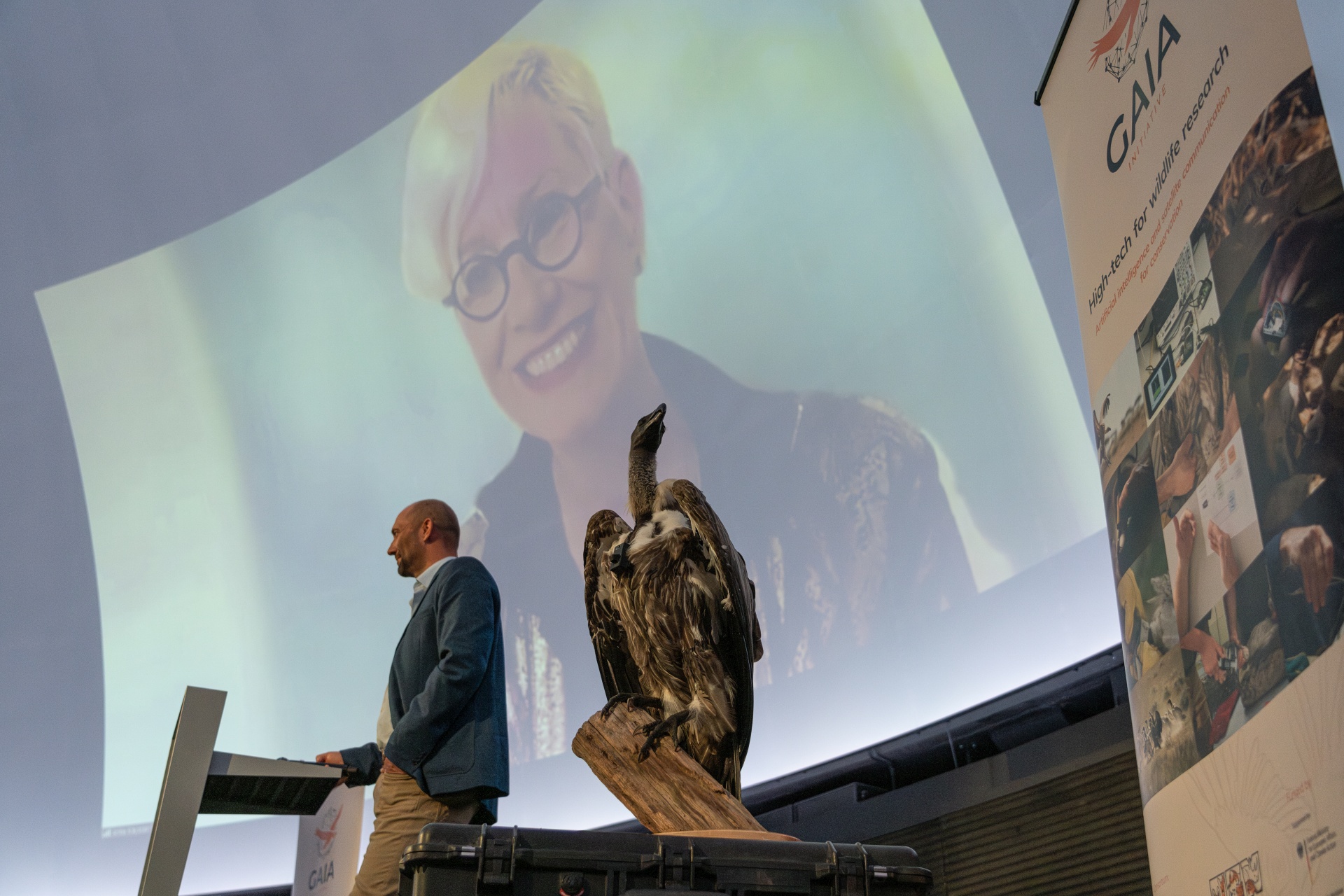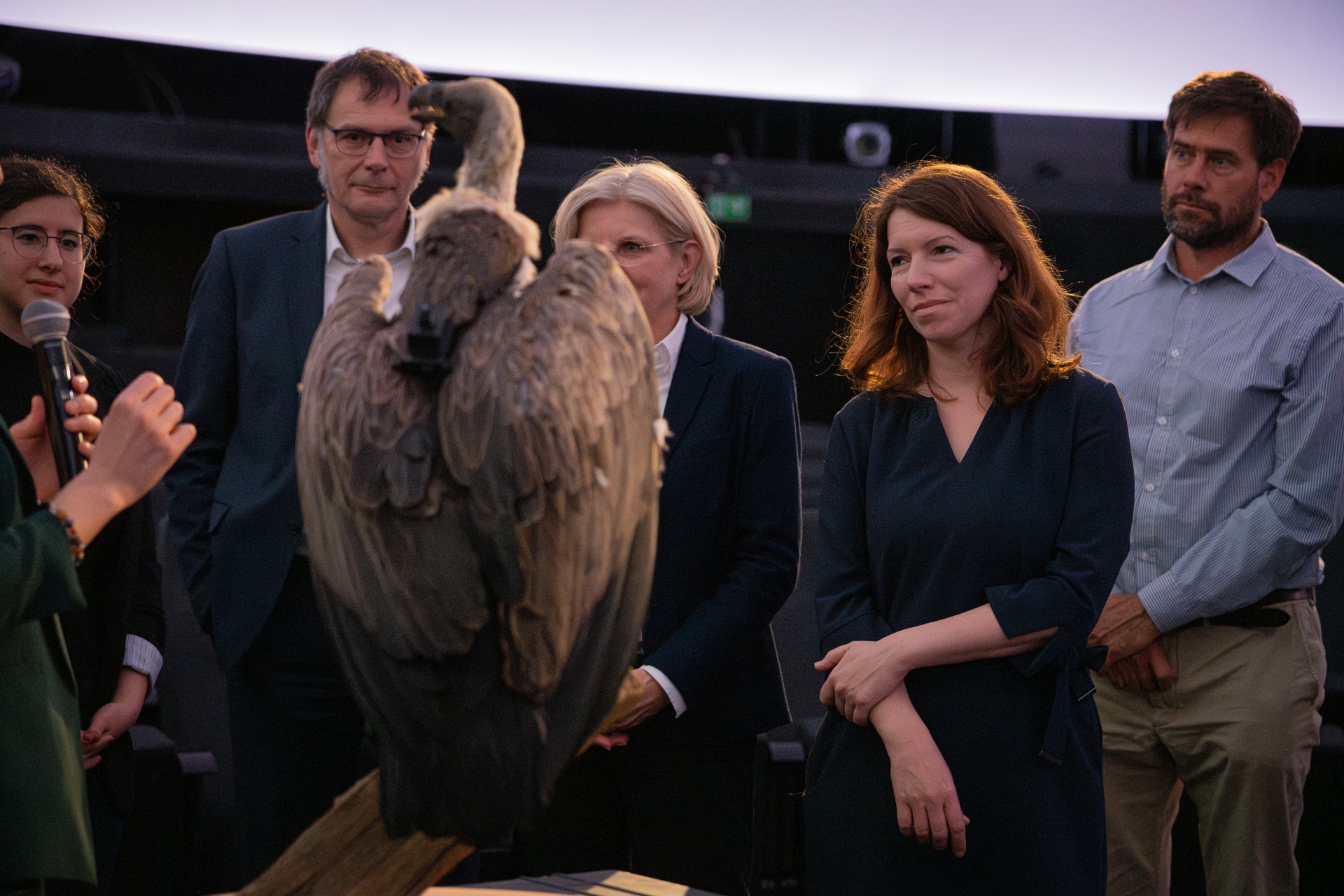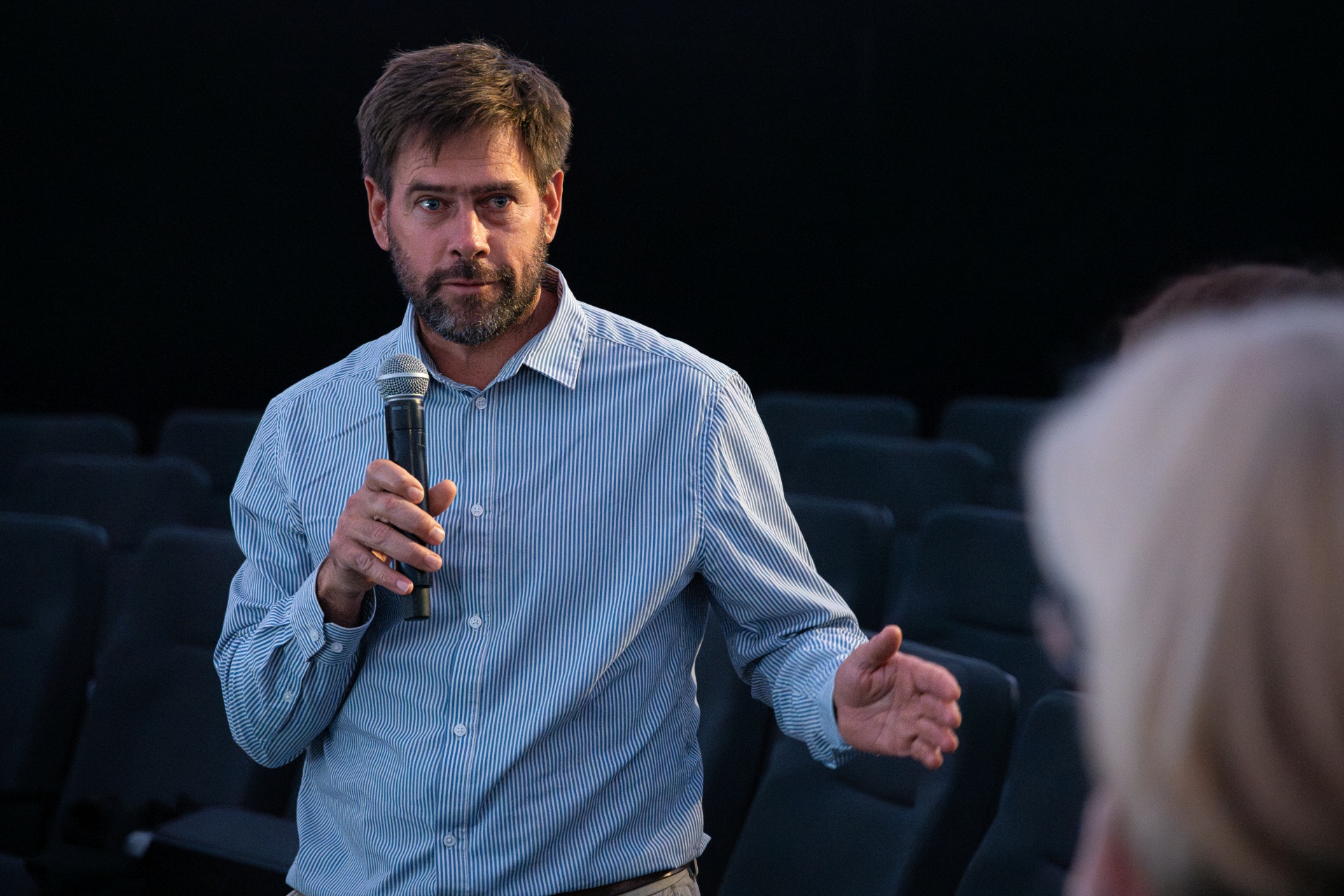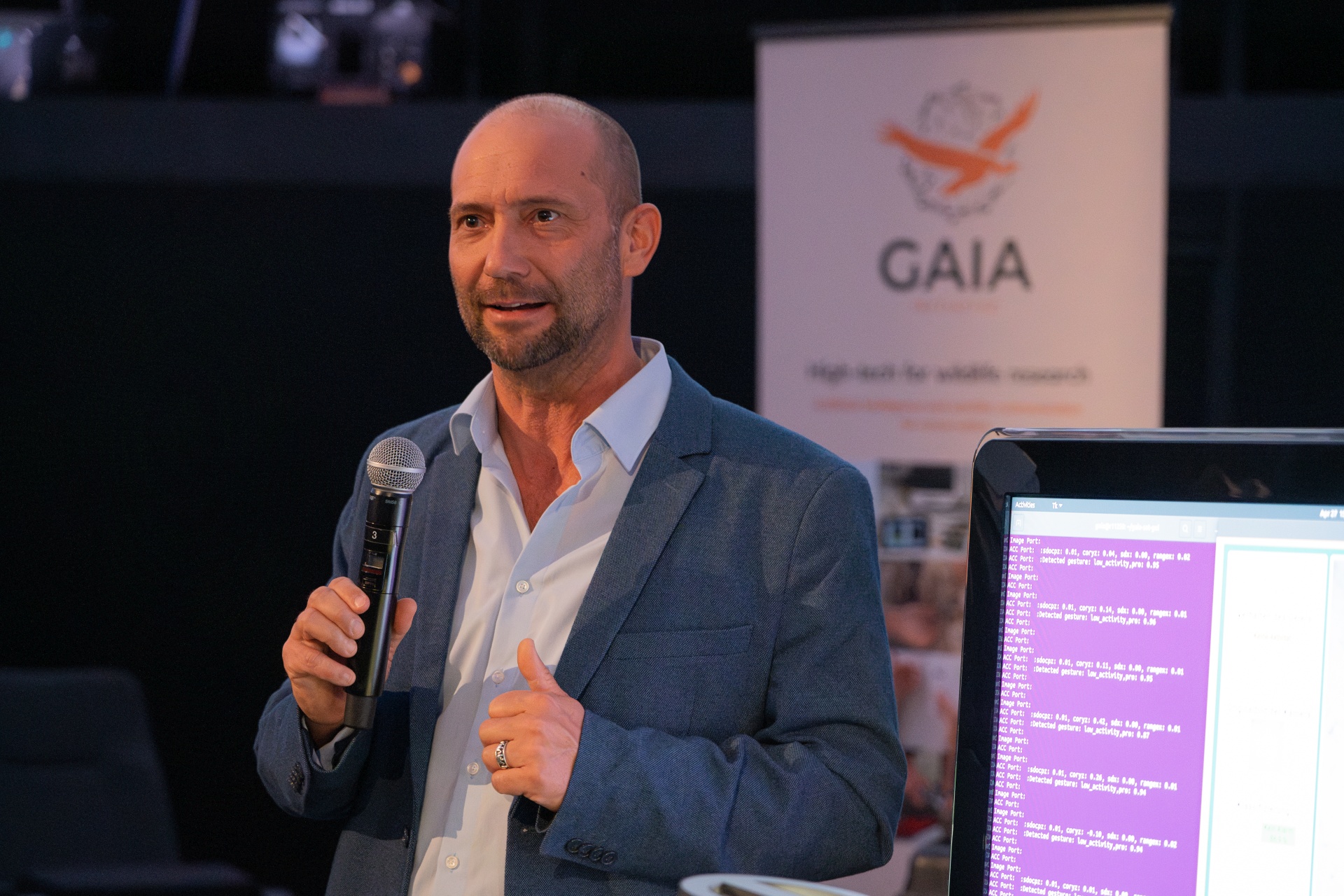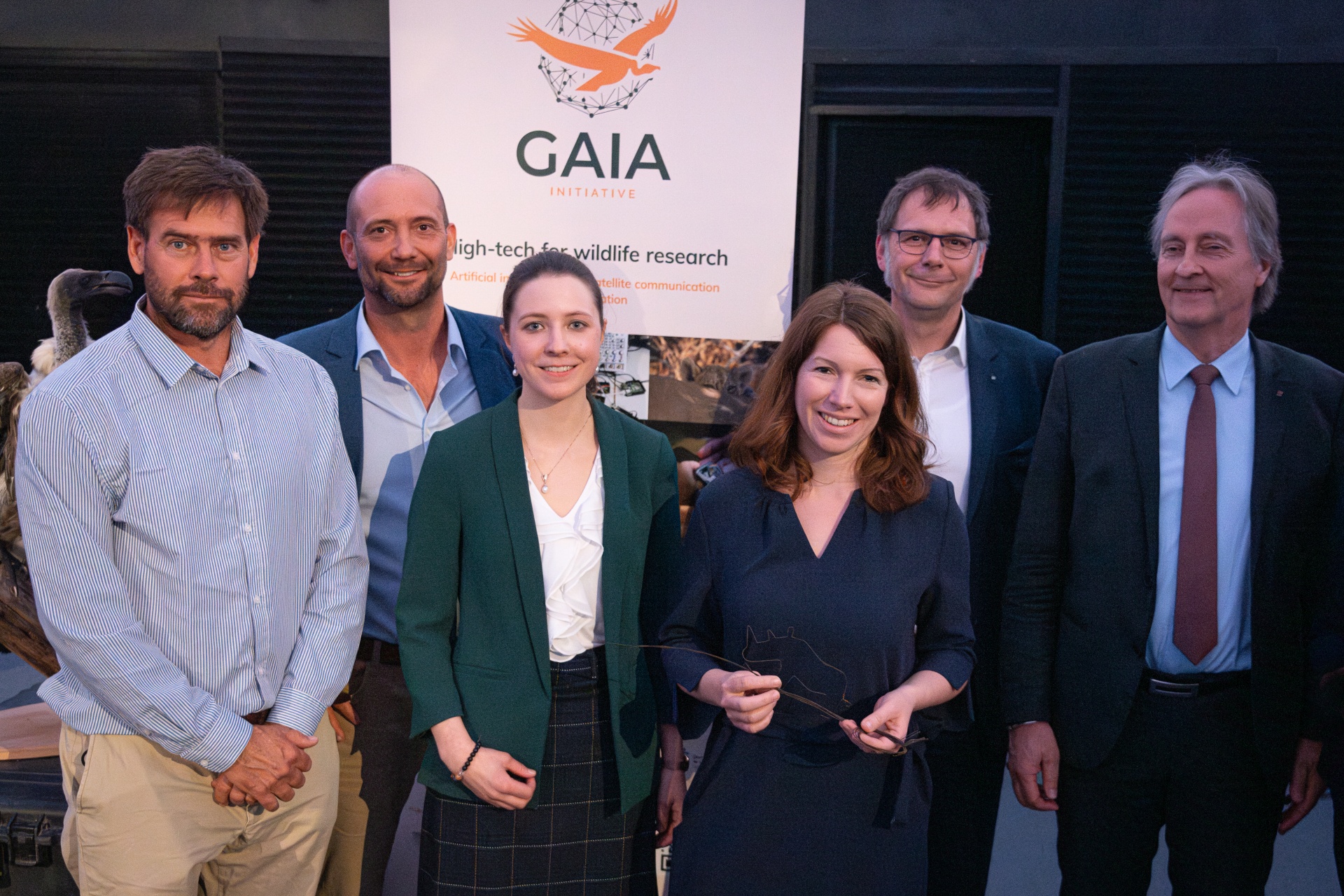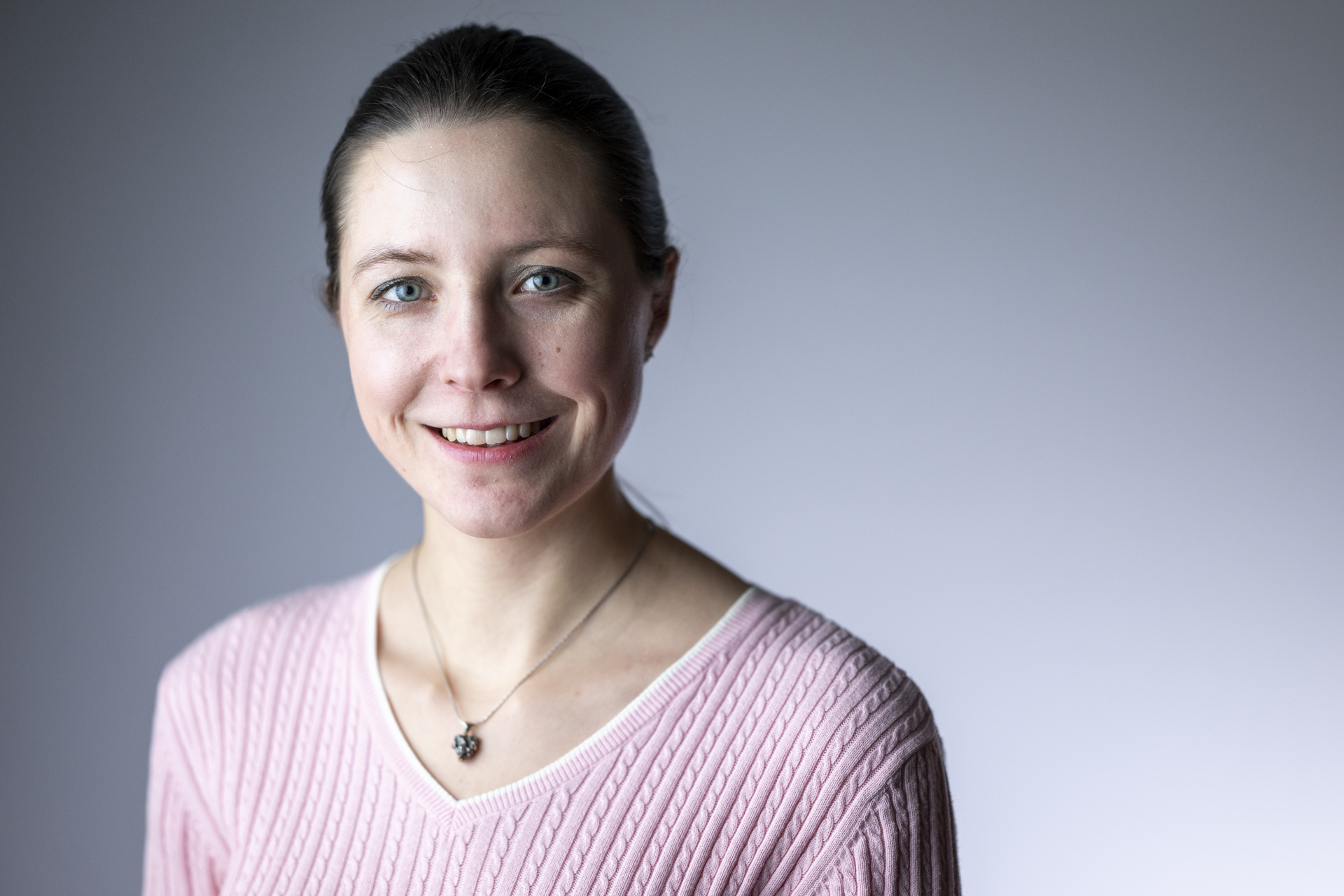The GAIA initiative is an alliance of research institutes, conservation organisations and companies with the aim of creating a high-tech early warning system for ecological changes. In several projects, they have been researching the functioning of selected ecosystems since the beginning of 2022 and are developing a new generation of animal tag equipped with sensor-based artificial intelligence (AI), an integrated camera, energy-efficient electronics and satellite-based communication technology that enable unprecedented insights into ecosystems. Their allies in this are vultures. Vultures are able to track dead animals in the savannah – such as the victims of an animal disease outbreak – very quickly and reliably. Their sensory abilities and intelligence are made readable for us humans by the novel animal tags. The tags detect and transmit animal behaviour in real time and are therefore core components of a network of animal, human and artificial intelligence – the “I³nternet of Life”.
At an event on 27 April 2023 at the Zeiss-Großplanetarium in Berlin, the GAIA initiative presented the prototypes of two new technology modules to invited guests, demonstrating the complete functional chain of its “I³nternet of Life” for the first time:
The team from the Fraunhofer Institute for Integrated Circuits and the Leibniz Institute for Zoo and Wildlife Research showed how an artificial intelligence on a microcontroller analysed the movement of a vulture, recognising feeding behaviour. This triggers an image capture from the camera integrated into the new animal tag and mounted on the birds’ chest. Another AI for image recognition immediately evaluates the camera image and is able to identify a dead animal. In this way, it is possible, for example, to get a very accurate, fast and reliable picture of how many zebras in a region are dying of anthrax, for example, or whether (and where exactly) a blue-green algae bloom in the waterholes is responsible for the death of many elephants – as happened in Botswana a few years ago.
The second technological innovation is a communication module that can send information generated on the animal tag, including GPS coordinates, to a ground unit via a satellite connection. For this purpose, the team’s communication specialists are adapting the IoT protocol mioty® for use on the GAIA I³ animal tags. In the future, mioty® communication will send important information about occurrences in extensive ecosystems independently of the coverage with terrestrial radio networks and thus report irregularities in these ecosystems reliably and without delay. This allows countermeasures to be initiated quickly and accurately. For data transmission, the GAIA initiative is pursuing the vision of a network of small satellites in orbit, in which space technology builds the bridge between animals, tags and humans.
This work of the GAIA initiative is unlocking new technological potential for wildlife research and conservation. In the coming months and years, the team will continue to develop these technologies, moving from prototypes to robust, operational technology. And GAIA is thinking even further: inspired by the swarm intelligence of vultures and their interaction with other carnivores, the team will develop virtual swarm intelligence in a network of animal tags to enable more efficient data analysis through distributed artificial intelligence – so-called extreme edge computing.
The event was attended by representatives from politics and conservation as well as by experts in space, satellite communication and AI. Greetings were given by Dr Anna Christmann MdB, Federal Government Coordinator for Aerospace Policy, Prof. Dr.-Ing. Anke Kaysser-Pyzalla, Chair of the Executive Board of the German Aerospace Center, and Prof. Dr Martina Brockmeier, President of the Leibniz Association.

